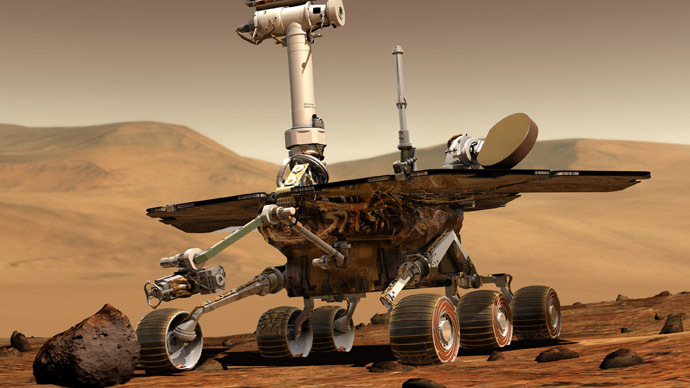On cosmic budget: NASA’s Opportunity to roll around Mars for 2 more years

The fiscal year coming to an end on September 30, NASA has been reviewing its planetary projects in terms of feasibility. The agency is also trying to prioritize which missions could be dropped if the next year’s budgets are low.
Of the 14 operating missions, the Mars Exploration Rover Opportunity and the Lunar Reconnaissance Orbiter (LRO) were on the verge of closure to the extent that their funding was included into a supplement to the budget request and not into the main part of it.
Opportunity’s mission has lasted for over 10 years, during which the rover explored a lot of areas of Mars surface including the most ancient habitable environment on the planet. Scientists feared the opinion the rover can no longer be of any use would prevail. Moreover, Opportunity suffers constant mechanical glitches and flash memory issues; the latter has caused several computer resets.
Still, the rover, now heading to the so-called Marathon Valley where scientists believe the watery environment existed, has “received a reprieve of another two years of operations,” Nature reports citing scientists close to the project.
So has the LRO, which had the task to map the lunar surface for astronauts – this task having finished in 2010. Since then it has been studying changes of the Moon surface.
According to SpaceNews, NASA actually does not wish to abort any of the missions.
“We sent out the letters to the projects [and] those letters state that we’re not cancelling any missions,” Jim Green, NASA’s Planetary Science Division Director, told the outlet on Friday.
But the agency’s final review statement will only appear on September 3 at a planetary sciences advisory group meeting in Washington DC. The NAC Planetary Science Subcommittee will evaluate potential scientific return and will take a final decision.
Two missions are sure to go top of the list: the Curiosity rover on Mars and Cassini mission on Saturn. Three more missions, according to Nature, are still under scrutiny: the Mars Reconnaissance Orbiter, Mars Odyssey Orbiter and a contribution for an instrument aboard the European Space Agency’s Mars Express spacecraft, launched in 2003.
NASA typically allocates around $1.3 billion annually to planetary sciences but the real figures for the new fiscal year are not known yet. Besides it is a standing question of how much money the agency is going to spend for each mission including the extended ones.


